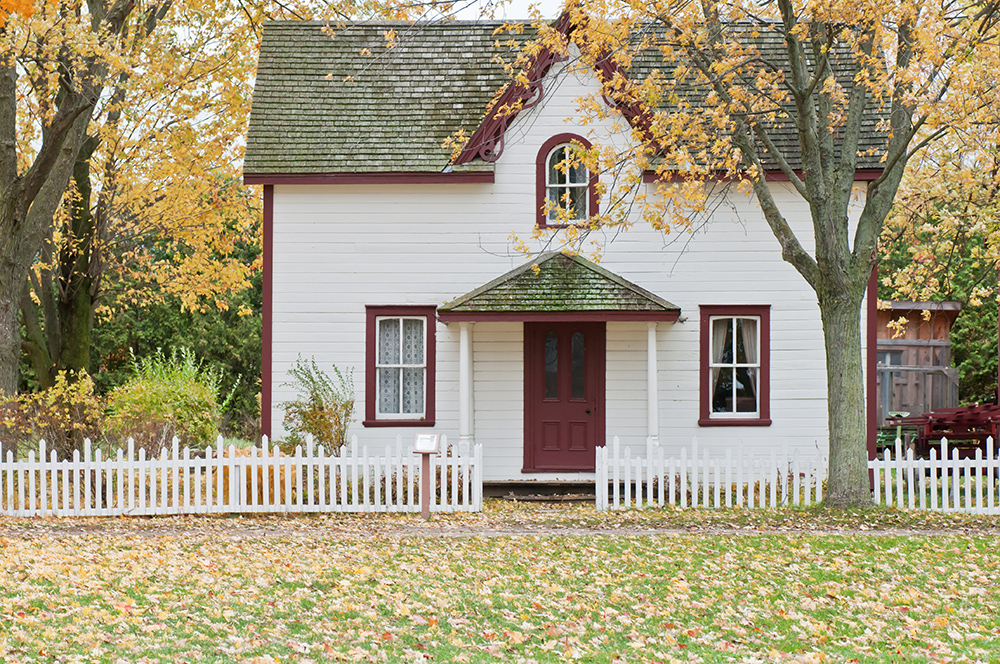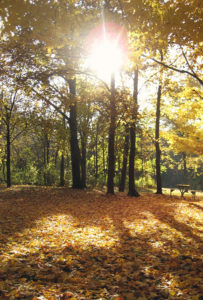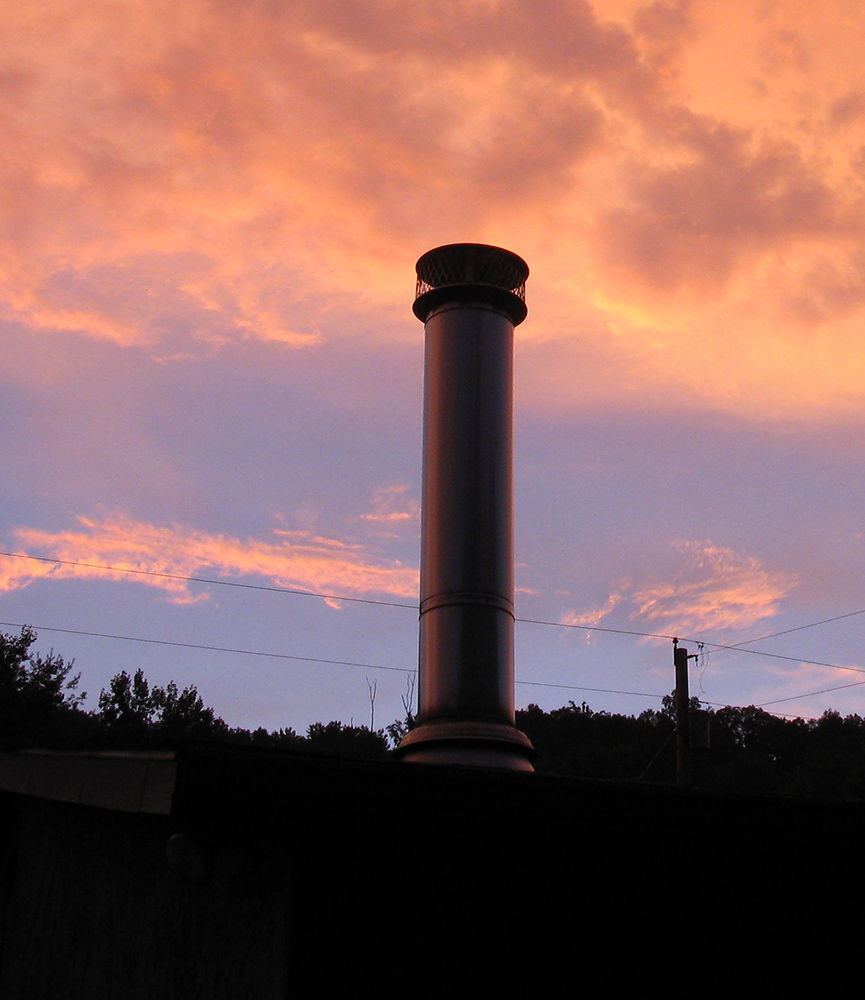
This third installment of our four-part series takes delves into the tasks of autumn. In warmer climates, fall doesn’t require much, but here in the mountains we need to get our homes and grounds all snuggled in for winter. Take care of these important chores, and you’ll rest easier when the cold winter wind starts to blow.
Outdoors: Leaves, leaves, and more leaves!

Everywhere you look nature is wearing her prettiest hues of gold, red, and orange. As the colors fade to brown, the wind is scattering leaves across your lawn. For most of us, that means it’s raking time. Some folks are meticulous (OCD, perhaps), and they want to get every last leaf into plastic bags to be hauled away. Others are tempted to just leave them on the lawn where they fall. This is not a good idea, because thick leaves can smother your lawn and encourage mold.
Need a new rake? Click here for a look at the best leaf rakes to buy. There are a few good alternatives to obsessive raking. One suggestion is to rake a light blanket of leaves into a circle around your trees and under your shrubs. This builds a natural bed of mulch, which can warm the roots in winter, and provide some refuge for beneficial insects. Yes, your lawn’s ecosystem requires the participation of insects, so please avoid spraying your lawn with pesticides. Just let nature be nature. Or just stop raking altogether by mowing over those leaves once a week until they stop falling. This breaks them down into nutrients for your lawn, and it eliminates the need for all those plastic bags that just sit in a landfill for a few hundred years.
The fall garden
Now that your veggies are nearly spent, it’s time to look at planting perennials. Tuck them into your beds in early fall, give them plenty of water before they go into “hibernation” for the winter. Also, you can put in bulbs, like hyacinths and tulips before the first freeze. Come spring you’ll be rewarded by a joyous burst of color. The bees will thank you, too, since food is scarce for them in early spring.
Click here for a good guide to planting perennials.
Get your mind in the gutter

All those falling leaves can do a number on your rain gutters. Wait until the leaves have stopped falling, and then be sure to clean and inspect the gutters. Either do it yourself, or call your gutter company to come out before there is any chance of heavy snow. While you’re at it, check the roof for loose or broken tiles or shingles, and get them fixed before winter sets in.
Faucets and hoses
Before the first freeze, you need to shut off and drain your outdoor faucets. It’s also a good idea to let your hoses drain out, wind them up, and put them into the shed or garage for the winter.
Sprinklers
Before frost arrives, it’s best to shut down your irrigation system, be sure above-ground pipes and valves are insulated, shut off the timer, and drain any remaining water. Be sure not to skip this. If those pipes freeze up with water in them, your wallet will become noticeably thinner when you try to use the system again in springtime.
Swimming pool
Pool season ends when the fall weather starts to turn colder. Clean and cover your pool, or schedule an appointment with your pool company. Don’t wait too long; they get busier as fall gets older.
Stove pipes and chimneys

If you didn’t clean your chimney or stovepipe in the spring, now’s the time to get the job done. If you’re using a chimney sweep service, call them early. You want to be sure to get the job done before you start burning wood. If you do the job yourself, be sure to use caution on ladders, and be sure to have a buddy with you to hold the ladder and keep an eye on you from the ground. Stovepipe or chimney cleaning kits are available at most home stores. For chimneys, the Soot Eater works with any cordless drill. For stovepipes, a fitted round brush will do the job. Extension rods are available for stovepipe brushes. Ask about them at the store.
Firewood
While we’re on the subject of chimneys, you’re going to need some wood to burn. Fall is the time to stock up on seasoned firewood. Seasoned means the wood is not recently cut and green. It’s had at least a year to “mature.” Put your wood on pallets, not on the ground. Or you can store up to a half cord of cut wood on a metal firewood rack. Cover the wood with a plastic sheet that doesn’t touch the ground, or put a small section of metal roofing over it. If you want to get fancy, there are prefab woodsheds available.
INSIDE: Heat pump, furnace, HVAC
Fall and spring are the times to have your system checked. Many HVAC companies have annual plans where you pay a small amount each month for a checkup twice a year. Call your local companies to compare prices. Check and replace filters, be sure the thermostat is functioning properly, and make sure nothing is blocking your heating vents.
Dryer vents, smoke, and CO2 detectors Fall is a great time to inspect and clean your dryer vent. Don’t skip this step. The US Fire Administration cites nearly 3,000 fires a year are caused by clothes dryers. Lint is flammable, so be sure to clean your vent annually. Ask your HVAC company if they service dryer vents. Otherwise, do it yourself or call a dryer vent specialty company to do the job. Fall and spring are also the best times to check your smoke and carbon monoxide detectors. Put in some earplugs and push the test button. Change the batteries at this time. Most hard-wired detectors have backup batteries. Be sure to keep them fresh. If your smoke alarm is more than 10 years old, it’s time to replace it. If you’re handy with light electrical work, you can do this yourself. Be sure to shut off the breaker first to avoid electric shock. If you are not comfortable with this, call an electrician to do the job.
Windows and doors

Check all your windows and doors for drafts, and apply caulk if necessary. Check the weather stripping around doors for wear, and replace if needed. If you have storm windows and doors, late fall is the time to get them set up. So get a handle on the chores of fall, and your home and grounds will be all tucked in and ready for winter. Next month, part four will delve into the chores of winter.
Call Peter Young Home Inspections
Buying or selling a home? Never sign any contract without first getting a home inspection! Call Asheville Home Inspector Peter Young, 828-808-4980, or click the link below to make an appointment today.
